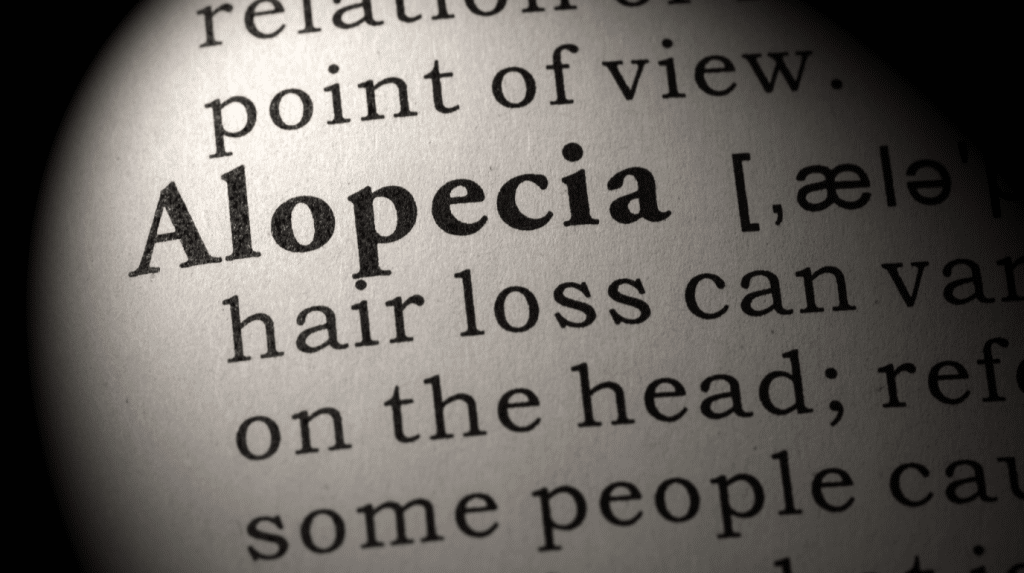
Alopecia, characterized by hair loss, affects millions globally and can take various forms, from small, patchy areas to complete baldness. Beyond the physical symptoms, alopecia often deeply impacts self-esteem and quality of life, highlighting the urgent need for effective treatments.
Bimatoprost, a prostaglandin analog initially used to manage glaucoma, has recently garnered attention for its potential to stimulate hair growth, particularly for those affected by alopecia. By extending the growth phase of hair follicles, Bimatoprost offers a promising approach for individuals seeking to regain hair in affected areas.
In this article, we will explore how Bimatoprost works as a treatment for alopecia, discussing its effectiveness, potential benefits, and limitations for those looking for new hair restoration solutions.
Key Takeaways
- Bimatoprost, originally developed for glaucoma treatment, has shown potential in promoting hair growth in individuals with alopecia.
- Clinical studies have demonstrated promising results, particularly for androgenetic alopecia and alopecia areata, but more extensive research is needed to establish its long-term benefits and optimal concentrations for hair regrowth.
- Bimatoprost is applied topically to the affected areas, such as the scalp, and consistent application following recommended dosages is crucial for optimal results.
- While generally well-tolerated, users should be aware of potential side effects such as redness, itching, and irritation at the application site.
About: Medical Spa RX provides medical practices with premium products at the best prices. If you’re looking to buy Bimatoprost Products for your practice, the sales representatives at Medical Spa RX can give you guidance.
Understanding Bimatoprost

Bimatoprost is a synthetic prostaglandin analog initially developed as a treatment for glaucoma and ocular hypertension. Commonly available as Bimatoprost eye drops, this medication works by lowering intraocular pressure, helping to prevent damage to the optic nerve.
Beyond its primary medical use, Bimatoprost has gained recognition in the cosmetic industry for its unexpected side effect: enhancing eyelash growth. This discovery led to its approval by the FDA under the brand name Latisse, making it a popular choice for those seeking fuller, longer lashes.
When applied to the base of the upper eyelashes, using Bimatoprost for eyelashes extends the growth phase of the hair cycle. This results in longer, thicker, and darker eyelashes. The exact mechanism involves stimulating the prostaglandin receptors in the hair follicles, which enhances the growth and density of the eyelashes over time.
Bimatoprost for Alopecia

Initially developed for treating glaucoma, Bimatoprost has shown potential in promoting hair growth. Several clinical studies have explored its efficacy in treating various forms of alopecia. For instance, research indicates that Bimatoprost for hair loss can stimulate hair follicle activity and prolong the hair cycle’s anagen (growth) phase.
Studies have demonstrated promising results, particularly in cases of androgenetic alopecia and alopecia areata. However, Bimatoprost’s effectiveness varies, and more extensive research is needed to establish its long-term benefits and optimal concentrations for hair regrowth.
Experts in dermatology and trichology have mixed opinions regarding the use of Bimatoprost for different types of alopecia. While some dermatologists highlight its potential, especially for androgenetic alopecia, they also caution that its efficacy may be limited compared to other treatments.
For alopecia areata, Bimatoprost has shown some promise in stimulating eyelash growth, but its effectiveness on scalp hair remains under investigation. Overall, experts agree that while Bimatoprost offers a novel approach to hair loss treatment, it should be considered part of a broader, individualized treatment plan.
Applying Bimatoprost for Hair Growth

Bimatoprost can be used topically to treat areas affected by hair loss, such as the scalp or other regions with thinning hair. The typical method involves using a sterile applicator to apply the solution directly to the targeted areas. For optimal results, it’s important to follow the recommended dosage and apply the solution consistently, usually once daily.
Consistency is key; irregular application can reduce the effectiveness of the treatment. Some individuals may also use Bimatoprost alongside other hair growth solutions, like minoxidil, under the guidance of a healthcare professional to enhance results. Understanding the nuances of Bimatoprost vs Latanoprost can also help in selecting the right approach, as Latanoprost is primarily used for eye pressure management rather than hair growth.
While Bimatoprost is generally well-tolerated, some users may experience side effects. Common Bimatoprost side effects include redness, itching, and irritation at the application site. In rare cases, users might notice skin darkening or unwanted hair growth in areas where the solution spreads unintentionally.
Bimatoprost presents a promising option for those with alopecia, but using it correctly and being aware of potential side effects are essential. Discussing options with a healthcare provider, including comparing Bimatoprost vs Latanoprost, can help ensure safe and effective hair restoration.
Patient Experiences with Bimatoprost for Alopecia
Many people with alopecia have tried Bimatoprost. They saw it as a new hope. For example, someone with scalp alopecia areata used it after other treatments failed. This person found that Bimatoprost worked better than clobetasol, a standard treatment.
Patients using Bimatoprost for alopecia have seen different results. Some found it helpful, with 78% getting hair growth they felt good about after 12 weeks. This shows Bimatoprost can make existing hair longer but might not start new hair growth.
Conclusion
Bimatoprost offers a promising option for treating alopecia. Studies indicate its effectiveness in promoting faster and darker hair regrowth with relatively few side effects. Many patients have experienced noticeable improvements, making Bimatoprost a potential game-changer in the fight against hair loss.
Experts are optimistic about its future applications, seeing it as a valuable addition to current hair restoration treatments. As research continues, Bimatoprost could play a significant role in advancing alopecia management and helping those affected regain their confidence.
FAQs
1. Is Bimatoprost effective in treating alopecia?
Bimatoprost has shown potential in treating certain types of alopecia, particularly androgenetic alopecia, and alopecia areata. Still, its effectiveness varies, and more research is needed to confirm its long-term benefits.
2. Are there any side effects associated with using Bimatoprost for alopecia?
Common side effects of using Bimatoprost for alopecia include redness, itching, and irritation at the application site, with rare cases of skin pigmentation changes or unwanted hair growth in unintended areas.
3. Can anyone use this treatment method?
Not everyone can use Bimatoprost for alopecia; it’s important to consult with a healthcare provider to determine if it’s suitable for your specific condition.
References
Alkhalifah, A., Alsantali, A., Wang, E., McElwee, K. J., & Shapiro, J. (2010). Alopecia areata update: Part I. Clinical picture, histopathology, and pathogenesis. Journal of the American Academy of Dermatology, 62(2), 177-188. https://doi.org/10.1016/j.jaad.2009.10.032
Zeppieri, M., Gagliano, C., Spadea, L., Salati, C., Chukwuyem, E. C., Enaholo, E. S., D’Esposito, F., & Musa, M. (2024). From Eye Care to Hair Growth: Bimatoprost. Pharmaceuticals (Basel, Switzerland), 17(5), 561. https://doi.org/10.3390/ph17050561
Barrón-Hernández, Y. L., & Tosti, A. (2017). Bimatoprost for the treatment of eyelash, eyebrow and scalp alopecia. Expert opinion on investigational drugs, 26(4), 515–522. https://doi.org/10.1080/13543784.2017.1303480




















